| Home > Policy > White Paper, Notice, Announcement > White Paper > JAPANESE GOVERNMENT POLICIES IN EDUCATION, SCIENCE, SPORTS AND CULTURE 1996 > Priorities and Prospects for a Lifelong Learning Society Chapter 2 Section 2 4 | ||
It is commonly assumed that, unlike companies' job skill development programs for employees, learning activities resulting from individual initiatives mostly benefit only the individuals concerned. For this and other reasons, such activities have not been adequately supported by either the government or the business sector. In 1991 only 20.3% of companies had paid education leave systems, and 82.8% of companies with such systems actually provided paid education leave ( Figure 2.41 ).
Leave taken for self-improvement tends to be short term. Of the 19.4% of employees who took self-improvement leave in 1994, 62.3% were away from work for fewer than three days, and 16.6% for less than one day. Moreover, 68.5% of those who took leave used ordinary paid leave, while only 13.7% took paid education leave. These figures indicate that paid education leave is not sufficiently available or utilized ( Figure 2.42 ). Support measures for self-improvement activities include the Subsidy System for Self-Improvement Activities, which provides partial subsidies for wages and study assistance costs to companies that grant paid education leave and assist with course fees. The only system that directly provides partial fee subsidies to workers is the Scholarship System for Older Workers' Self-Improvement Activities, which targets workers aged 40 or over.
In 1994, 80.0% of companies provided some form of support for workers' self-improvement activities. Specific types of support included financial assistance for course fees and other expenses (70.2%), adjustment of working hours (53.2%), provision of information on education and training (53.1%), sponsorship of courses and seminars (51.5%), and provision of paid education leave (23.1%) ( Figure 2.43 ).
Normally, support is provided subject to certain criteria, and frequently only for activities that are relevant to work. For example, 81.6% of companies apply criteria when providing financial assistance for course fees and other costs. In 73.6% of cases such assistance is provided only for courses that are relevant to work ( Figure 2.44 ).
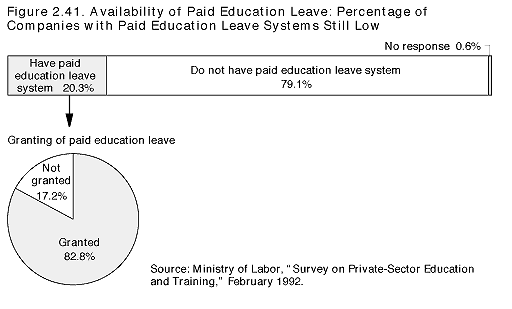

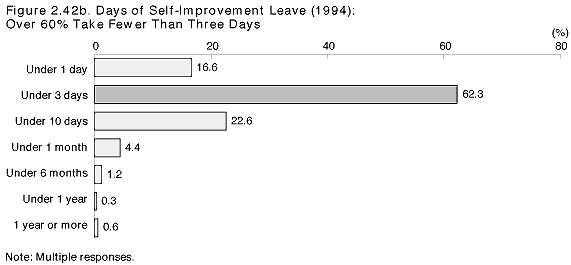
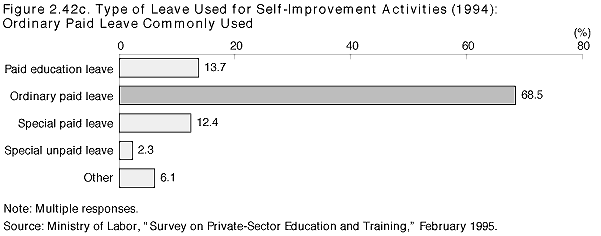
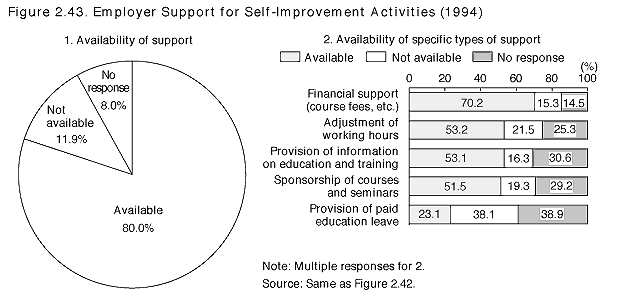
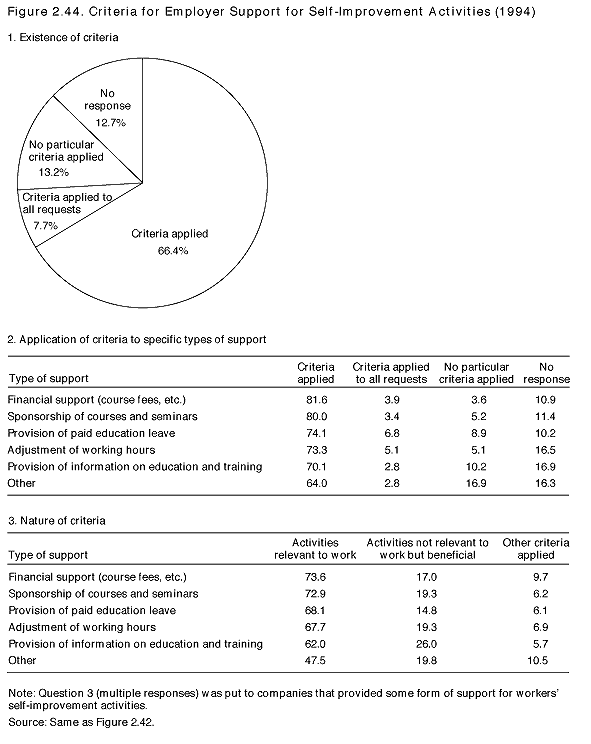
| Back to Top | MEXT HOME |